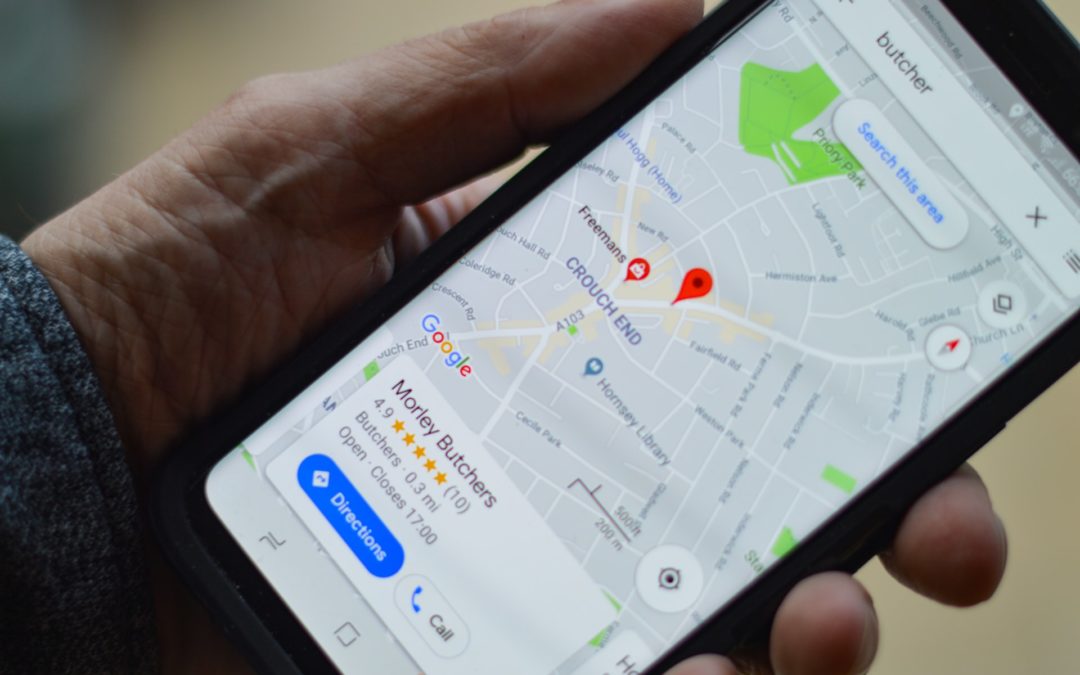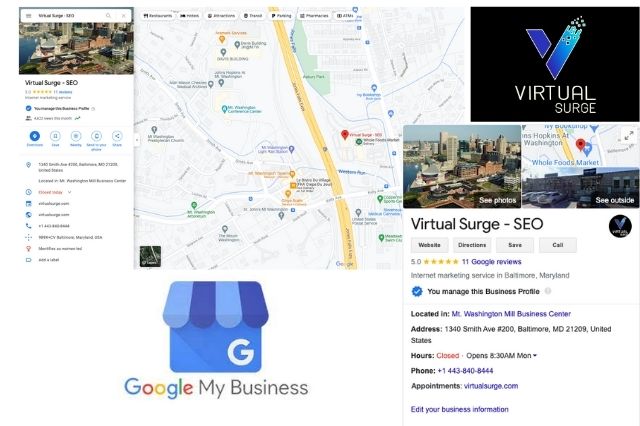
by shannon | Jan 31, 2022 | Baltimore SEO, Posts
Techniques in Optimizing Video Content for Search
Do you know that more than 500 hours of video content are uploaded on YouTube every minute? In the recent past, video marketing has become an important global content marketing tool amid the rising number of active YouTube users.
With over two billion people using YouTube for entertainment, marketing, or learning, video views account for most internet marketing traffic. And as the video content advances with changing technology, it’s crucial to stay current on the best optimization processes to make your videos stand out and enhance the user experience.
The big question is — is your content showing on the first pages of search engines and video platforms? If not, keep reading this article for tips on how you can optimize your video content for search and reach a large targeted audience.
Integrate Target Keywords
Finding the right keywords is one of the ways to optimize your videos. You can use a keyword planner and choose about six keywords related to your video description and content.
Once you have a list of appropriate keywords, use one to name your video file. The rest of the keywords can feature in the meta tags and video description. Always confirm that the file type is compatible with the intended platform you’re uploading the video.
Create an Engaging and Eye-Catching Thumbnail
Your video’s thumbnail is what viewers first see when a video pops up on search engines. The thumbnail you use determines if the searchers will click on your video or shy away from it. A compelling, visually appealing, and easy-to-read thumbnail encourages people to click on your video.
An effective thumbnail will also reflect your brand and video description without compromising the visual appeal necessary to capture your viewers’ attention. It’s wise to ensure that the thumbnail has as high a resolution as possible, whether zoomed in or out.
Write a Concise, Enticing, and Clear Title
Besides the thumbnail, the video title is another factor that video searchers may focus on. It plays a role in determining whether they click on your video or not, and in turn, if you’ll get views or not.
Always ensure that the title represents what’s in the video content. That’s because it shows your brand is authentic and relevant to what viewers need, meaning they’ll get to enjoy the video since you offer what you’ve promised. Here’s how you can optimize the video title:
- Include keywords naturally while sparking curiosity
- Aim for at least a five-word title, with not more than 70 characters
- Write the most critical information upfront
- Always leave your brand details and episode numbers at the end
Accurate Description and Top-Notch Content
With thousands of competing brands, you can’t afford to compromise on content and video description. Always aim to deliver accurate, high-quality content that’ll keep the harshest of video critics glued to their screens. On the other hand, video descriptions are a type of metadata that ensures searchers find you easily and instantly decide if they will watch your videos or not.
You can use the tips below to optimize your video content and descriptions:
- Use unique and accurate information with relevant keywords
- Begin with the most important content while explaining the intent of the video
- Use hashtags associated with the content
Consider Captions, Transcriptions, and Subtitles
Transcriptions automatically boost the SEO factor, helping drive traffic to your site. Remember that search engines don’t read videos; hence, when you transcribe, use captions, or subtitles correctly; they will crawl over the provided captions and improve your ranking accordingly.
Transcribing also enables you to extend your reach and tap on a vast audience. For instance, you may capture the attention of the deaf.
Insert the Video You Want to be Ranked First
Embedding a video on the focus page will ensure that search engines find and rank it. If you have multiple videos you want to optimize for search, the best thing is to use different pages for each as Google usually stops crawling videos after the first one.
For an optimal user experience and high ranking, ensure that the video is easy to spot by making it the page’s focus. A hidden video will only turn off searchers and not appeal to search engine crawlers.
The Bottom Line
With the increasing popularity of video content marketing, understanding how to optimize video for search is crucial for any business. That’s one of the many tools to use for your overall SEO, a language we understand all too well here at Virtual Surge. Get in touch with us for quality SEO services to increase your brand’s visibility, attract new customers, and generate ROI.

by shannon | Dec 25, 2021 | Baltimore SEO, Digital Marketing, Local SEO, Posts
What You Need To Know About Google’s December 2021 Product Review Update
Product reviews are consumer opinions or feedback regarding goods or services. Many business websites have product review sections that allow customers to rate and review the products they have purchased. Such reviews are public, and they may influence the purchase decisions of other prospects. These reviews often use an affiliate link to products listed on a commerce site, intending to guide those finding the reviews useful towards the purchasing page. Recently, Google announced the December 2021 product review update. The algorithm update will impact product review pages and will take three weeks to complete. Here’s what you should know about Google’s product review update.
Product Review Page Ranking Assessment
In its announcement, Google indicates that the update will occur through an automated assessment specific to the product reviews webpage. It also communicated that the product review pages will be subject to similar ranking factors as those that apply to regular web pages.
The Timing
The December 2021 product review update has been a gradual process launched and commenced in April. If you have made improvements on your product reviews page, you may see changes in terms of ranking. Google conducted a spam update in early November followed by a core algorithm update during the last days of November. Many might argue that the updates are ill-timed due to the Thanksgiving and Christmas festivities which are the busiest shopping seasons. However, the updates haven’t been too disruptive. Businesses shy away from performing updates during such seasons since it could lead to unintentional loss of web rankings. But the opposite could happen. Google announced that the goal of the update was to reward sites with authentic high-quality reviews and to improve the quality and usefulness of reviews it shows to users.
New Product Review Best Practices
Based on clientele feedback, Google warned that the two new product review requirements are aimed at fishing out fake product reviews. First of all, any product review should show that the person writing it has used the product in question. That’s because many of the reviews are low-quality reviews stemming from affiliate sites that post a rewritten version of the product’s specifications and features. The second requirement is that the product reviews offer multiple purchase options. The goal is to enhance the customer experience. Google is looking to adopt these measures as part of its future product review algorithm updates. Therefore, these two best practices have a high likelihood of becoming future ranking factors for product review pages. The sooner you adopt and implement the practices for your product review pages, the better your SEO position.
Promoting Quality Product Reviews
With user feedback in mind, Google provided guidelines on how to review products through a new document titled writing high-quality reviews. Let’s explore some recommendations you should follow to abide by Google’s guidelines:
- The product under review should be from a user’s perspective or point of view.
- The reviews should demonstrate that you are knowledgeable about the products under review. It’s imperative to show that you are an expert in your niche.
- The product reviews should incorporate audio, videos, or other links which give evidence of the specific experiences reviewers have had with the product. That helps to support your expertise and the review’s authenticity.
- Share and provide quantitative evidence on how the products measure up in various performance categories.
- Provide evidence for the unique features of the products and how these features set them apart from other products they compete with.
- Offer coverage for other comparable products potential clients can consider or provide explanations about which product might be best for certain circumstances or uses.
- Provide reviews that discuss the benefits and drawbacks of a particular product based on original research conducted on the product.
- It also helps to have a comprehensive description of how products have evolved from previous releases. That addresses any issues and influences consumers’ final purchase decisions.
- Reviews should identify key decision-making factors for the products category and how the product performs in those areas. For instance, a review on a car could provide information on safety, handling, fuel economy, and energy efficiency, which are vital decision-making factors before purchasing a vehicle.
- Have reviews that incorporate descriptions of a product’s design and its effect on the user beyond what the manufacturer says.
- Product reviews should include inbound or outbound links to other resources to help the reader make an informed decision.
- Quality product reviews also include outbound links to multiple sellers to give the reader options to purchase from a seller of their own choice.
To Sum It Up
With product review algorithm updates taking force, it’s time that you align your website and product reviews page with the above requirements. It can be a daunting endeavor to embark on the process yourself, but that shouldn’t worry you. You can contact the website specialists like those at Virtual Surge. Let us manage your reviews and align them with Google’s update requirements while you focus on what you do best-run your business!


by shannon | Oct 9, 2021 | Baltimore SEO, Digital Marketing, Marketing, Posts
The Best and Easiest Way to Optimize Google My Business
Some search engine marketing strategies can be costly and challenging to implement. That’s why Google My Business listing can be an invaluable asset to your business.
Studies show that four in five people use search engines to find local information. It has also been discovered that half of all individuals who use online resources to search for a local business visit the company they choose within 24 hours.
Google My Business (GMB) is a free tool that businesses with a brick-and-mortar address can manage their online presence in various search engines.
That said, a GMB listing or page can help your business appear on Google Maps and rank better on search engine results pages. If yours is a local business, GMB has additional features to enhance your company’s local listings and improve its ranking in local searches.
Due to its effectiveness in expanding a business’s digital reach, GMB has become a popular online marketing tool for most local establishments, increasing competitiveness. To help your company stand out, you can rely on the following tips on how to optimize your Google My Business page.
Create Your Google My Business Profile

The first thing you can do to optimize your GMB page is to create a company profile complete with detailed, accurate, and up-to-date information. In that context, you should ensure that you’ve filled out all the required fields on your listing, which include;
- Company name
- Phone number
- Physical address
- Website
- Category
- Description
- Hours of operation
- Questions and answers section
- Photos
- Additional fields that may appear based on your industry.
By providing the information requested by Google, it becomes easier for potential customers to find and contact your company for transactional purposes. Your company also stands a chance of ranking higher on the Google results page.
Select a Specific and Relevant Business Category

The category you choose for your business is quite essential as it helps Google determine on which online searches your business’s listing will appear. Google offers a list of available categories, which you’ll have to use since you can’t generate your own.
If you can’t find a specific category that fits your business’s description, try selecting a general classification that accurately captures your company’s profile.
Add High-Resolution Images of Your Business

Image optimization can be a cost-effective way to expand your online reach via your Google My Business listing. Google claims that companies that add their photos on their GMB profiles can get 42 percent more requests for their directions on Google Maps than businesses that don’t. Similarly, it acknowledges that such businesses may also get 35 percent more clicks on their websites.
That said, you should consider using high-definition images to provide customers with a glimpse of what to expect from your company. To do this, you can add your business’s logo or photos of the sales team, office, or anything that can showcase your offerings. As a bonus tip, you should also try developing a 360-view interactive tour of your company for potential clients.
Past that, to ensure that your photo looks just right on your GMB page, you need to follow some predetermined specifications for uploading images. These specifications have been detailed below.
- Your images should be in PNG or JPG format.
- The images should be sized between 10 kilobytes and 10 megabytes.
- The minimum resolution for each image should be 720 pixels tall and 720 pixels wide.
- Use only high-definition photos, without significant alterations or excessive filter use.
Provide a Local Contact Number
Besides ensuring that you’ve provided a consistent phone number across all of your company’s digital listings, you should also offer a contact number that features your local area code.
This helps Google identify your company as a locally owned and operated service provider. Past that, you should ensure that the number you use on your GMB page is the same one on your business’s website or in the landing pages you may include in your listing.
Monitor Your GMB Question and Answer Section

The GMB Q and A section is arguably one of the great features for local search marketing on Google. Here, your potential clients can pose questions regarding your company, and you can provide real-time answers to their queries.
That said, failing to monitor this section and respond to customers’ inquiries can lead to misinformation about your business. It may even affect your company’s reputation negatively both online and on the ground.
Contact a Full-Service Digital Marketing Company
If you need local search engine marketing strategies, look no further than Virtual Surge. We have extensive experience implementing SEO tactics, reputation management, web design, and coordinating SEO audits.

by shannon | Sep 22, 2021 | Baltimore SEO, Posts
Trending Topics For Content Creation
In this digital age, it has become easier than ever to discover what’s got people buzzing in your locality, country, or even the world at large. The term trending has become synonymous with popular online content. It doesn’t matter where the piece of content comes from or the format it’s in. If a similar article is viewed, reacted to, and shared consistently, digital platforms will often note it and sometimes prioritize it.
Knowing how to find trending content can help you grow your craft and achieve better marketing outcomes as a content marketer. This is because finding trending content involves looking for topics or issues that people are already interested in.
You can use this knowledge to benefit from the online traffic the content generates, irrespective of whether you’re sharing it yourself or integrating it into your work.
However, finding trending topics for content creation can sometimes be quite hectic. Therefore, regardless of whether you’re looking for quality blogs or viral social media posts, below are some of the few ways you can use to get what you’re searching for.
Social Media Trending Sections

Today, content creators can rejoice that social media platforms appreciate that people enjoy knowing what’s popular around them. Most social networking sites feature their trending sections, often including a change option at the top of the list of trending topics.
This option allows you to adjust the trends around various fields, making it easier to find popular content around the topics you’d like to focus on for your brand. A survey by the Pew Research Center discovered that approximately 62 percent of American adults received their news from social networking sites.
With that in mind, rest assured that speaking with people about trending topics on these platforms could help you gain significant common ground with your brand’s audience.
News Sites That Cover Trending Topics
Contrary to popular belief, many of the internet’s leading news sites that focus on trending topics can be a great way to find out what’s popular locally or worldwide.
As you browse the internet searching for inspiration for your next content, some of the topics that may pop up on sites such as BuzzFeed and Reddit may not be relevant to the message you want to communicate with your brand. However, such sites may have subsections that can help you find content that can resonate with your audience.
Although you may need to shift manually through the web pages to determine which topics deserve your attention and those that don’t, you’ll eventually find exactly the kind of content you’re looking for. These sites can also help you discover breaking stories in real-time instead of waiting for two or three days after their appeal has worn down.
Google Trends
Google is arguably the premier provider of digital marketing tools, offering online marketers robust products such as Google Analytics, Google AdWords, Google Blogger, and Google Webmaster Tools. The company also has something extra for content marketers, Google Trends, a reliable alternative for anyone in need of trending topics for content creation purposes.
All you have to do is type the topic you’re looking for in the search box and evaluate the amount of online traffic it’s creating. If you can’t find anything actionable, the site allows users to perform country- or sector-specific searches to improve the targeting of the results.
To make an in-depth analysis of the results, you can click on the country or state names to receive completely localized outcomes. This can help you land significantly targeted keywords that can help you find content that focuses on your market base.
Social Mention

Social Mention is an intelligent tool that evaluates content across wide-ranging digital platforms. This means that it doesn’t limit its activities to major networking sites such as Facebook and Twitter.
Instead, the tool goes through over 100 other sites, including YouTube, FriendFeed, Digg, and sites that host user-generated content to discover trending topics. Upon submitting a query, Social Mention may provide a list of influencers who regularly post on one or more digital platforms about the issue.
In most cases, these individuals achieve their titles as influencers since they have many followers and a high level of audience engagement.
Contact the Best Digital Marketers Around You

With advances in technology constantly transforming how businesses interact with their customers and their performance in the industry, it’s high time for you to consider finding effective online marketing solutions.
However, as a business owner, you’ve probably realized that time may sometimes make it difficult for you to manage your business while concentrating on remaining competitive. Therefore, to enable yourself to focus on improving your brand’s performance, you should consider hiring digital marketing professionals at Virtual Surge.

by shannon | Apr 30, 2021 | Baltimore SEO, Posts
Google Algorithm Changes and Updates
Any Google algorithm changes can either hurt or help you, depending on how carefully you pay attention to the changes. Even if you are determined to keep up with Google algorithm changes, it can be difficult to do so without the right connections and resources.
In this article, we are going to talk about all things Google algorithm changes and how it impacts you. More specifically, we are going to look at why Google updates its algorithm, why you need to keep up with these algorithm changes, and how to keep up with them.
Let’s get started.
Why Does Google Update Its Algorithm?
Google’s number one goal is to satisfy the user’s intent. With this in mind, Google updates its algorithm in order to improve search results for Google users. Although algorithm updates may be annoying for website owners and certain professionals, their intent is to help the user, first and foremost.
More specifically, the algorithm is meant to promote sites that have expertise, authoritativeness, and trustworthiness. As a result, the algorithm will be made in such a way to better find and promote these sorts of sites.
Why You Should Keep Up With Google Algorithm Changes
It is really important to keep up with Google algorithm changes if your profession includes optimizing websites, optimizing content for search engines, or running websites that depend on optimization. Since algorithm changes can impact tactics and SEO strategy, it’s imperative to track any changes.
For example, failing to notice an algorithm change can hurt your visibility, search ranking, organic search traffic, return on investment, conversion, revenues, and more.
Although it’s easy to think that algorithm changes are Google’s way of punishing you, the changes can actually help you in all of those ways if you pay attention. In other words, tracking changes and utilizing said changes can help improve your visibility, search ranking, organic search traffic, return on investment, conversion, revenues, and more.
Long story short, you should keep up with Google algorithm changes to ensure that the content you put out is set up in a way to maximize the algorithm changes, leading to a more successful and lucrative website.
How To Keep Up With Google Algorithm Changes
Tracking Google algorithm changes is incredibly difficult. Any bigger algorithm updates, such as core updates, will often be announced or confirmed via Twitter. However, Google sometimes updates their algorithm as much as twice a day, meaning that they don’t announce all of their updates in this way. Here are some key tactics for keeping up with any Google algorithm changes:
-
Follow the Twitter Account @searchliason
Even though Google does not update all of its algorithm changes, this Twitter account has been becoming more reliable for sharing different content that is related to upcoming changes to the algorithm. This content can help you stay ahead of the game so that the algorithm change does not hurt your search rankings.
-
Watch Traffic and Search Ranking
Using a browser’s private mode, search keywords that are most valuable or relevant to your site. Pay attention to the web traffic and search rankings. If there are any algorithm changes or differences, the search rankings will change as a result.
SEMRush includes a feature that allows you to view keyword rankings, almost as if you were searching from an entirely different location. This is an incredibly useful tool if you are looking for users far away from you. You can find this feature under Position Track Settings.
MozCast is a really unique tool that allows you to see the “temperature” of Google’s algorithm. The weather report style rating tells you exactly how turbulent the algorithm has been every day for the past month. Stormier days show that Google’s rankings are more in flux than usual.
Panguin Tool is a free SEO tool that can help you find out if a Google algorithm change has impacted organic sessions. A variety of filters are used on top of Google analytic data, making this tool incredibly easy to use.
Key Take-Aways
Google algorithm changes can make or break your website. It’s important to track these changes so as to improve your rankings and website as a whole. Although tracking it can be difficult, you can follow them on Twitter, watch search rankings, or use different tools to make the process a little bit easier.
If you need help enhancing your SEO strategy amidst Google’s turbulent algorithm changes, contact Virtual Surge today.

by shannon | Feb 26, 2021 | Baltimore SEO, Posts
How Schema Markup Increase SEO and Traffic
Schema markup is an important part of a website’s SEO. It is a slightly newer form of optimization that can greatly boost your website’s ranking in search engines. However, schema markup is not used as often as it should be.
If you work with your schema markup, you will be giving yourself an edge over the competition who do not. If you want to learn more, be sure to keep reading.
What is a Schema Markup?
Schema markups are part of a website’s code. They are used to inform search engines on what the website is about- allowing the search engine to determine what would be the best results for users.
This code can also display certain pieces of information in their search results. For example, if you want to display a business’s address or even information, you can do that as well.
In short, schema markup tells the search engine what types of content are present on a website, making it crucial for SEO practices.
Why It is Important
Schema markup allows your website to rank higher, no matter the content you post or what your site’s focus is on. Small businesses, blogs, and more can all greatly benefit from the positive impact this code has on your SEO.
On average, websites that use a schema markup rank about four positions above those that do not use it. So, if you are looking to increase your SEO and organic website traffic, you will want to consider markups as an option. There are plenty of ways that you can use them as well.
Overall, if you want to rank above websites that do not use schema, you can reach out to Virtual Surge. We are experts in working with this type of code.
How to Use Schema Markup
If you decided that schema markup is for you- you would want to know how to use it! When applied correctly, markups can elevate your site in the engine’s results. Here’s how to get started:
-
Visit Google’s Structured Data Markup Helper
-
Choose your data option
-
Copy and paste the URL/HTML you want to work with
-
Click “Start Tagging”
-
Highlight the elements you want to markup
-
When finished, click “Create HTML.”
-
Copy/Paste or add the schema markup to your website’s code
-
Test your new schema markup
However, there are many different ways to go about getting the schema markups that your website needs. You can also work with the code manually to create something that works much better than a generated option. If you are not able to do this yourself, you might want to hire a professional to take care of it for you.
Overall, the more content your markup, the better SEO you will have. There are a lot of elements at play within SEO and schema markups, so you will need to ensure that you are using them properly.
Microdata
Schema markup is a sort of microdata- which is what the search engines use to read the information on a website. If you are interested in using it on your own site, you will want to be familiar with the following terms.
Itemscope, Itemtype, and Itemprop
These terms are part of microdata, which is what the search engines use to determine what type of content a website is focused on.
Itemscope assigns the scope of the data. It then creates a new item that is then associated with that element or type of content.
Itemtype refers to the URL that is used to define Itemprops in the data.
Finally, Itemprop is used to add properties to an item; any HTML element can have a property associated with it.
How Do Schema Markup Improve SEO Results?
When you use markups, your websites are going to show up more strongly in search engine results. Less than ⅓ of Google search results include a schema markup, giving your link broader visibility- meaning people are much more likely to click on it.
Schema Optimization Practices
Optimization will need to be considered when you work with a schema. When building the site, you may accidentally cause performance issues when the schema markup code is too complicated.
You want to avoid this, as it would cause your website to run slower and make it more difficult for people to use.
Good schema optimization comes with practice- people tend to get a better feel for it with more experience. Our team is very experienced in working with this type of code, allowing us to create impactful SEO results.
This article was originally posted at Virtual Surge.














